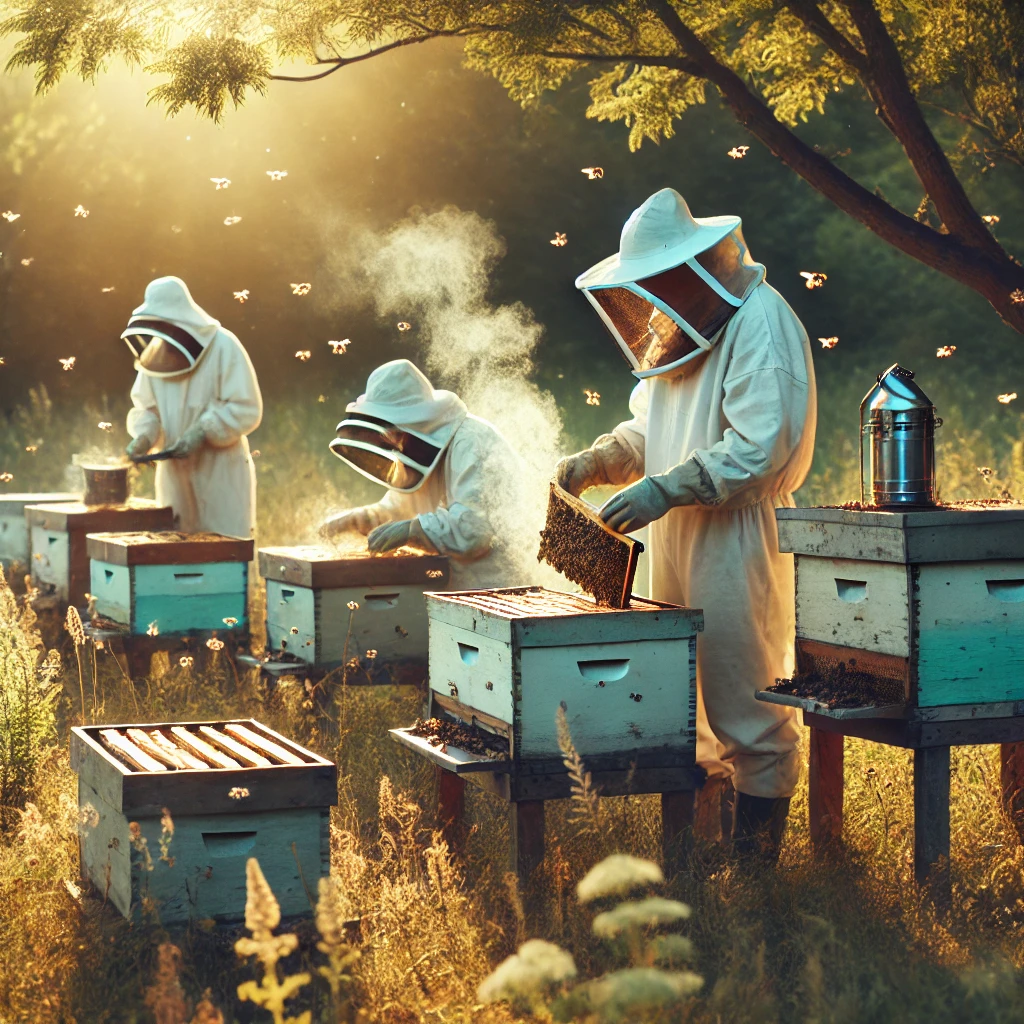
This is the first of a series of articles drawn from my ten years of experience as a beekeeper. As you will learn, every colony is an individual superorganism, and your years of experience should take account of how many hives you have managed over that period, successfully or not!
Before starting beekeeping, there are several essential aspects to consider to ensure the success and sustainability of your apiary. Here are the principal things you should know. Each one will be explained in more detail in future articles.
This article has been written for beekeepers in the United Kingdom. Rules and regulations may be different in other countries.
1. Local Beekeeping Associations
Join your local branch of the BBKA: In the UK, the British Beekeepers Association (BBKA) has local groups across England. Similar organisations exist in Scotland, Wales and Northern Ireland.
Membership of your local organisation includes membership of the national organisation and provides you with Public Liability Insurance covering your actions as a beekeeper. Once you acquire bees, you purchase Bee Disease Insurance to compensate you if your colonies must be destroyed to prevent the spread of a notifiable disease.
Local associations provide courses, apiary sessions, and other learning opportunities to help you with the rest of this list.
2. Basic Bee Biology
Understand the Honeybee Lifecycle: Learn the stages of development (egg, larva, pupa, adult) and the roles of the queen, drones, and worker bees.
Bee Behaviour: Study how bees communicate (e.g., through pheromones and the waggle dance) and their swarming habits.
3. Apiary Location
Foraging Needs: Bees need access to abundant nectar and pollen sources, usually within a few miles of the hive. Ensure your area has diverse plants that bloom throughout the season for nectar and pollen collection. Bees need a nearby source of water.
Sunlight and Shade: The hives should get morning sun to warm up early in the day, encouraging foraging. Positioning hives with a windbreak (trees, shrubs or a fence) will help protect them if it is cold or windy.
Safety and Security: Select a location away from predators or livestock that may attack or damage the hives. Ensure you have easy access and the site is not prone to flooding. Avoid areas where pesticide may be sprayed and industrial areas with high pollution.
Neighbour Relations: Inform your neighbours, especially if you live in a populated area, and address any concerns they might have. Maintain an adequate distance from other apiaries to avoid spread of diseases.
4. Bee Health and Pests
Common Pests and Diseases: Beekeepers must know how to detect and treat pests like Varroa mites and diseases like European Foulbrood and American Foulbrood.
Pest Management: Learn integrated pest management (IPM) techniques to keep bees healthy without harming them.
5. Equipment
Basic Beekeeping Tools: Essential items include a smoker (to calm the bees), a hive tool, and protective clothing (veil, suit, gloves).
Hive Setup: Choose the type of hive (National, Langstroth, Top-bar, etc.) and understand how to assemble and maintain it.
Frames and Foundation: These are where bees build comb; knowing how to install and inspect them is critical.
6. Bee Care and Maintenance
Hive Inspections: Regularly check for healthy brood patterns, food stores, and signs of disease or swarming.
Feeding: Be aware of when supplemental feeding (sugar syrup or pollen substitutes) might be needed, especially in early Spring or late Autumn.
Honey Harvesting: Know when and how to harvest honey safely without harming the colony or depriving it of necessary winter stores.
7. Seasonal Management
Winter Preparations: Bees need to be properly insulated and adequate honey stored for winter. Reducing hive entrances can help protect against cold drafts and pests.
Spring Buildup: Manage rapid growth in spring to avoid swarming and ensure the colony has enough space.
8. Cost and Time Commitment
Time Investment: Beekeeping requires regular attention, especially during the active season. In spring and summer, be prepared to inspect hives every 7 – 10 days.
Financial Costs: Initial costs for bees, equipment, and supplies can add up, so plan for the investment.
9. Safety Concerns
Allergies: Be aware of any bee sting allergies in yourself or your family members and have an action plan to deal with them should they happen.
Lifting: A full brood box of ten frames can weigh between 50 and 90 pounds (23 to 41 kg) and a full super of 10 frames 30 to 60 pounds (14 to 27 kg). Be sure you will be capable of handling these weights or have someone with you to help.
Burns and Cuts: Burns can arise when lighting or using a smoker, and using a flame to sterilise equipment. Cuts can come from hive tools and other sharp objects. Splinters or sharp edges of equipment can cause injury.
10. Acquisition of bees
Obtain local bees: This point has been left until last for good reason. It would be best if you had dealt successfully with all the previous points before acquiring a colony of bees.
As your local association will tell you, locally-reared bees are best. Getting a colony first and learning as you go along is a recipe for disaster.
By thoroughly preparing in these areas, you’ll set yourself up for success as a beekeeper.